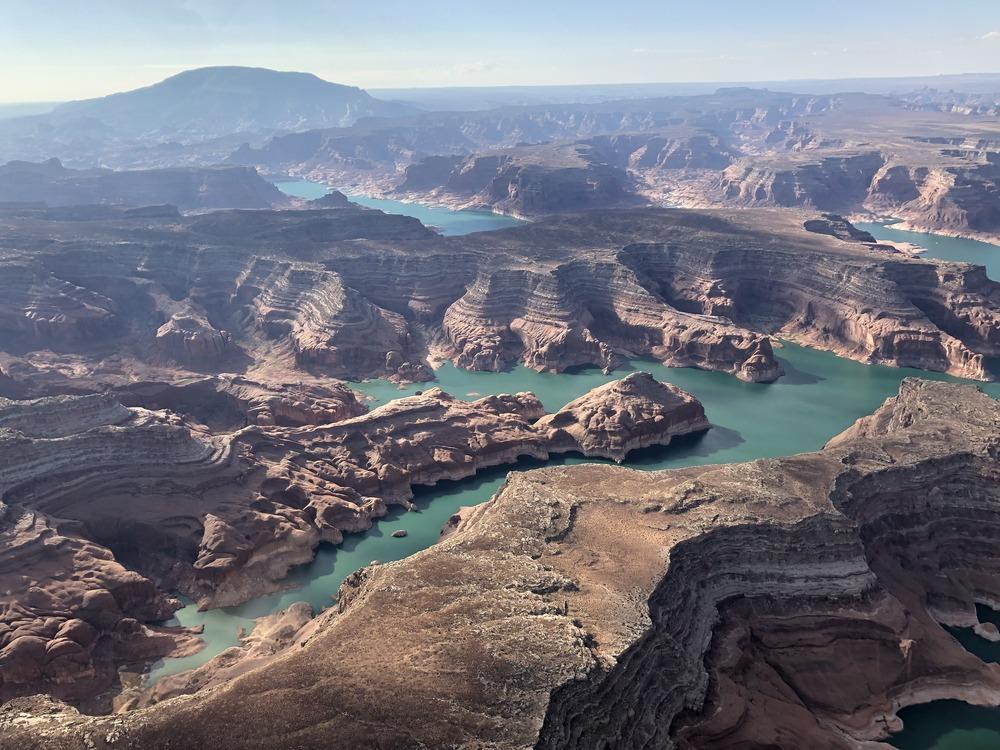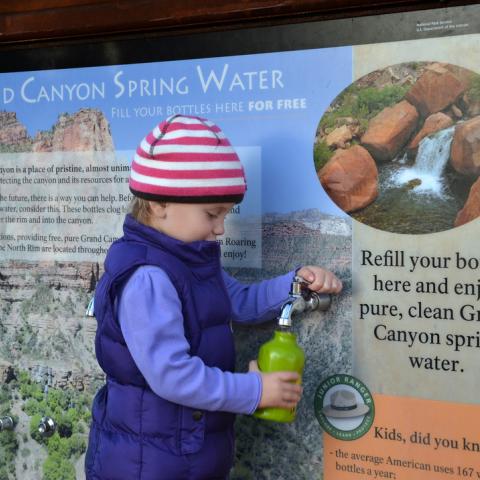
Lake Powell reaches inside layered canyons. Navajo Mountain in background / NPS
The Upper Colorado River Commission has issued a statement calling for states in the Colorado River Basin to work for a practical, clear-eyed approach to water management following last month's Colorado River Water Users Association conference in Las Vegas.
All seven states in the Colorado River Basin were represented, divided into two groups: the lower basin — Arizona, California and Nevada — and the upper basin — Colorado, New Mexico, Utah and Wyoming. Current federal management rules for Colorado River water use that expire in 2026. The conference is a big part of the basin states working to come up with a new plan.
Back in November, the Bureau of Reclamation issued a draft proposal outlining five potential options to manage the river's water usage going forward, including one in which nothing changes. That last option is a non-starter.
Forty million people depend on the Colorado River as a water source for drinking, irrigation, and industry, and there's simply not enough to go around under current usage numbers after two decades of drought. Lake Powell, formed by the Glen Canyon Dam, is holding roughly 35% of its total capacity. Lake Mead, above the Hoover Dam, is at about one-third of capacity, according to the Los Angeles Times.
“We’re 19 years into the one of the worst droughts in recorded history,” Marlon Duke, a spokesman for the Bureau of Reclamation, told the Traveler back in 2020. “We’ve gotten 19 years into this drought, but we can’t just continue the status quo. We have to take major steps to protect the water supply.”
There is, and has long been, however, a division between upper and lower basin states about how the declining water supply should be protected. At this conference, the lower basin states advocated for their proposal to share cuts across the entire basin. The upper basin, however, proposed only voluntary water cuts among their users, with mandatory cuts downstream in the lower basin states, according to the Colorado Sun.
The state negotiators have until August 2026 to come to a management plan. One thing all parties want to avoid is having litigation over a management plan end up at the U.S. Supreme Court.
The Upper Colorado River Commission's statement is a call to move in the direction of shared management, without resorting to litigation.
“The conversations that took place at Colorado River Water Users Association in December confirm that 2025 will be a pivotal year and critical time in the history of the Colorado River," the statement reads. "The representatives of each of the seven Colorado River Basin states unanimously agree that we have a responsibility to come up with a basin-wide consensus solution to managing the Colorado River. Moving forward into 2025, the Upper Division States are committed to working toward a sustainable solution that manages the use of the river within the available supply. All the Basin States representatives agreed that everyone must do their part and adapt to the hydrology we have to guide the operations of Lake Powell and Lake Mead going forward.”
As Patrick Cone wrote in the Traveler: "It now seems certain that there will be major deficits in Colorado River flows in the future, with unintended consequences to downstream users, hydroelectric power, recreation, fish, wildlife, water quality, flood control and all water-dependent ecological systems along the entire river. It all depends on whether the weather and the climate continue to change as predicted. And that’s a problem for everyone."




 Support Essential Coverage of Essential Places
Support Essential Coverage of Essential Places






